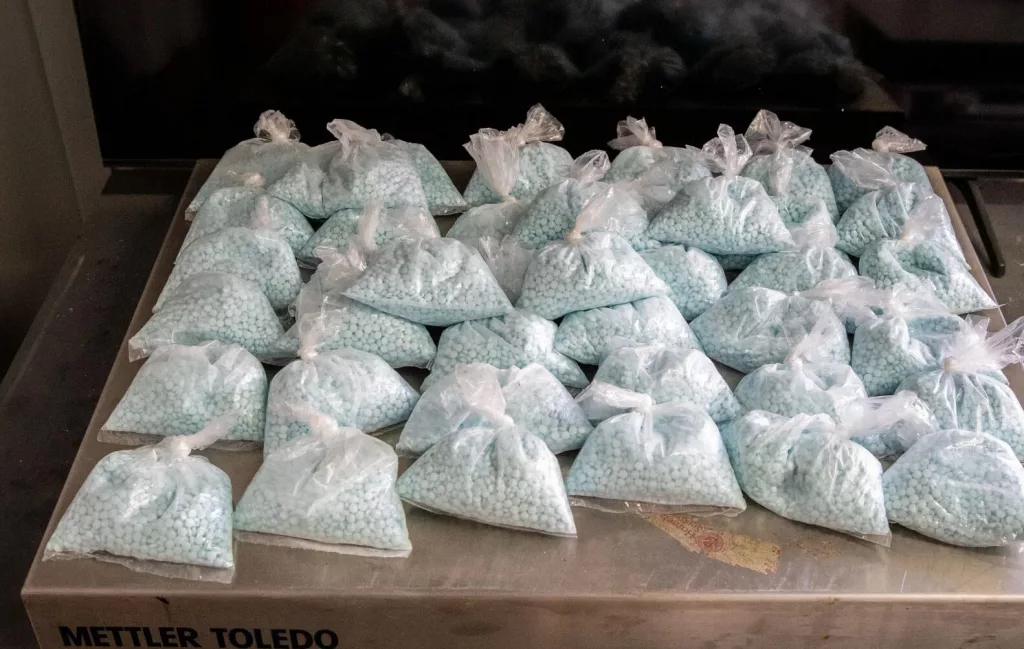WASHINGTON, D.C. – Street dealers across the U.S. are adding potent synthetic opioids to drug supplies in what federal officials say could be another deadly chapter in the nation’s opioid epidemic.
Cases across the country highlight the dangers. A 27-year-old Florida dealer who went by the nickname “Draco” sold batches of pills he said contained oxycodone to undercover agents. Some the pills had no drugs in them at all. Other batches only contained acetaminophen, the non-addictive pain reliever found in Tylenol. Yet other pills contained N-desethyl isotonitazene, an opioid far more deadly than fentanyl. Draco’s real name was Blake Alfonso Kolessa, according to federal court records.
(The Center Square) – Street dealers across the U.S. are adding potent synthetic opioids to drug supplies in what federal officials say could be another deadly chapter in the nation’s opioid epidemic.
Cases across the country highlight the dangers. A 27-year-old Florida dealer who went by the nickname “Draco” sold batches of pills he said contained oxycodone to undercover agents. Some the pills had no drugs in them at all. Other batches only contained acetaminophen, the non-addictive pain reliever found in Tylenol. Yet other pills contained N-desethyl isotonitazene, an opioid far more deadly than fentanyl. Draco’s real name was Blake Alfonso Kolessa, according to federal court records.
DEA officials have reported mid-level and street-level dealers mixing synthetic opioids called nitazenes with other drugs.
“When combined with fentanyl, the effects of both drugs are heightened, which significantly increases the chance of fatal drug poisoning,” according to the DEA’s most recent National Drug Threat Assessment, which was released in 2024.
Nitazenes, which have never been approved for medical use, were developed in the 1950s as opioid analgesics, but were never approved for market, according to a study published in 2023. That paper notes that “a characteristic of nitazenes is their high potency (e.g., hundreds to thousands fold more potent than morphine and other opioids and tenfold more potent than fentanyl).”
Nitazenes include metonitazene, etonitazene, isotonitazene and protonitazene. All are listed under Schedule I of the Controlled Substances Act, meaning the federal government considers them to be illegal drugs with no currently accepted medical use and a high potential for abuse.
“The mixtures are probably being made mainly by mid-level and street-level dealers in the United States,” according to the DEA report.
In November 2024, federal prosecutors in California charged a 21-year-old Santa Clarita man with selling protonitazene to another man. The mother of the man who bought the drugs later found him dead in the front seat of his car parked outside her home, according to court records. That case remains pending.
The case of another accused Florida drug dealer shows how nitazenes enter the U.S. recreational drug supply. In that case, the Florida man was mixing nitazenes with fentanyl. The unnamed dealer sold fentanyl in “distribution quantity amounts” to other drug traffickers in South Florida, according to the federal indictment. The dealer used Bitcoin to buy six kilograms of metonitazene and nine kilograms of protonitazene from the company based in Jiangsu, China, to make his supply more valuable.
The dealer was looking for chemicals to mix with fentanyl and heroin “to increase his supply of opioids and to enhance their effects on consumers,” according to the indictment. The Chinese company has since become a target of U.S. sanctions from the Department of the Treasury’s Office of Foreign Assets Control.
“[The dealer] mixed several different opioids and pressed them together,” according to the indictment. “The resulting mixture was a powerful and dangerous combination of protonitazene, metonitazene, fentanyl, fluorofentanyl, and heroin.”
DEA officials are worried about Mexican cartels getting involved with nitazenes.
“Since nitazenes are sold by China-based chemical suppliers through online marketplaces, the Mexican cartels could easily use their existing relationships with those suppliers to obtain nitazenes,” according to the DEA report. “To date, however, Mexican authorities have not seized nitazene or nitazene-fentanyl mixtures in Mexico.”
